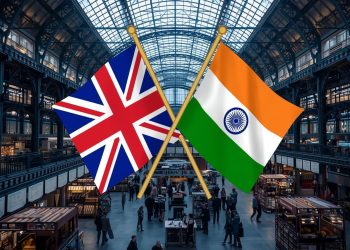India’s changing relationship with gold
Gold in India is no longer seen only as jewellery. It’s becoming a serious part of investment portfolios and even a strategic reserve for the country. According to a recent Economic Times report, India’s households now hold gold worth $3.8 trillion, which equals almost 89% of the country’s GDP.
At the national level, the Reserve Bank of India’s latest data shows that gold reserves have crossed 880 tonnes, now making up around 14.7% of India’s foreign exchange reserves.
Why gold is becoming a strategic asset
Gold is gaining importance for investors because it provides stability during uncertain times. The World Gold Council says gold adds “liquidity with no credit risk,” which helps protect value when stock or bond markets fall.
In 2025, domestic gold prices have surged by nearly 23%, as noted in the WGC market update. This rise has pushed more investors to see gold as a hedge against inflation and currency weakness.
Meanwhile, investment demand through coins, bars, and gold ETFs has increased even as jewellery sales slowed.
What’s happening in India’s economy
A Reuters analysis found that India’s gold demand in Q2 2025 fell by 10% year-on-year because of record prices that reduced jewellery purchases. But even though fewer people are buying physical gold, the total value of gold holdings is at an all-time high due to soaring prices.
The RBI’s steady gold buying shows that even the central bank sees gold as a safeguard in its financial strategy. Indian gold ETFs also hit a record value of about ₹676 billion by July 2025, with over 2 lakh new investor accounts, as detailed in WGC’s July update.
What this means for India
For households, gold is now viewed less as a luxury and more as a form of financial security. Families are using it to protect their savings against inflation or market downturns.
For the economy, the large amount of wealth stored in gold reflects both strength and concern. It provides safety for individuals but locks up capital that could have gone into productive investments.
For policymakers, rising gold imports affect India’s current account balance. High demand during festive seasons could again widen the trade deficit, so officials continue to monitor gold inflows closely.
Looking ahead
Experts expect that if inflation stays high or global markets remain unstable, gold will keep its strong position in Indian portfolios. Demand is also likely to rise during the festive season. But a big shift is already clear – gold in India is evolving from a decorative asset in the jewel box into a strategic pillar of both household and national financial planning.













